The 10 Driest Cities in the U.S., Ranked
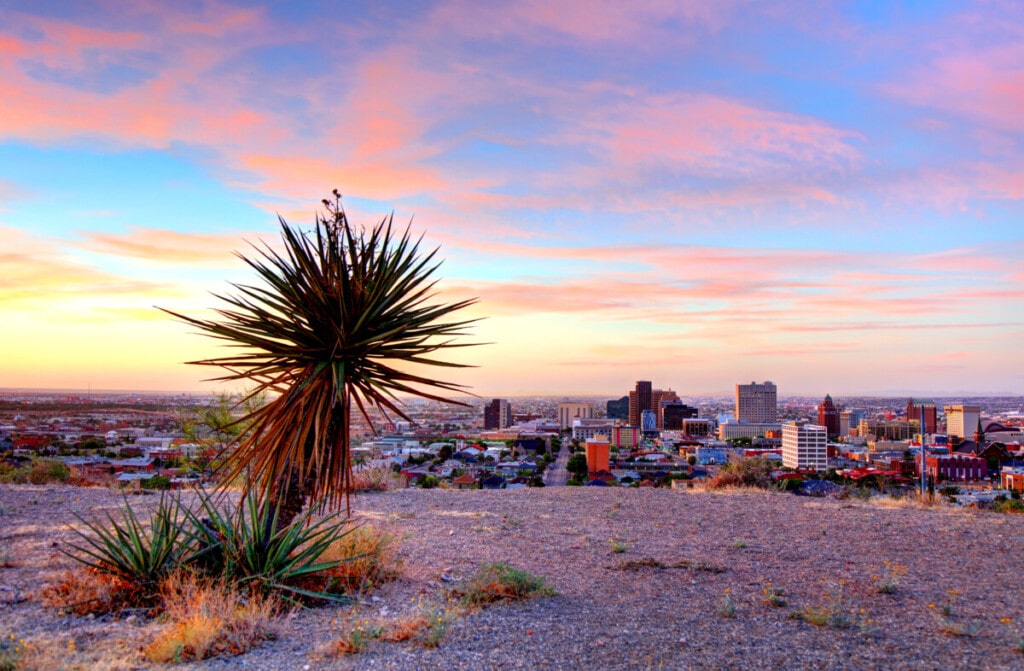
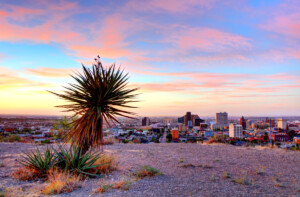
Some U.S. cities are defined by their dry, sunny weather, trading lush greenery for sweeping desert landscapes, open skies, and low humidity. From desert basins to high plateaus, these places see just a few inches of precipitation a year, creating a climate that’s both striking and, for many, appealing.
It’s no surprise that many of the driest cities in the country are in the Southwestern U.S., a region known for its agriculture, desert climate, and warm weather. In fact, this sunny, dry appeal helped drive migration to the area during the pandemic, as people looked for more space and a change of pace. But with year-round warmth and sun comes challenges, namely drought and long-term water security.
So, if you’re looking for a warm retreat or want to say goodbye to the rain, we’re here to help. We’ve compiled a list of the driest cities in the U.S. to help you move with confidence. Read on to learn more and discover if one of these places is right for you.
How we determine the driest cities
Before diving into the driest cities, let’s define our terms. There are two common ways to calculate whether a city is dry:
- Annual precipitation total, and/or;
- Annual average humidity
For our purposes of determining the “driest” cities, this list will focus on cities that receive the lowest annual average precipitation. Since most of the driest cities also have very low humidity, they would likely rank highly for both metrics.
Keep reading to see Redfin’s rankings of the driest cities in the U.S. with a metropolitan area population of 100,000 or more.

What are the driest cities in the U.S.?
- Yuma, AZ
- Lake Havasu City, AZ
- Las Vegas, NV
- Bakersfield, CA
- Phoenix, AZ
- Reno, NV
- Farmington, NM
- Kennewick, WA
- Yakima, WA
- El Paso, TX
1. Yuma, Arizona
- Average annual precipitation: 3.2 inches
Yuma, an agricultural powerhouse in the heart of the Sonoran Desert, is the driest city in the U.S. by a wide margin. With endless sunshine and near-perfect winters, it’s easy to see the appeal.
Nicknamed the “Winter Salad Bowl Capital,” Yuma grows about 90% of the nation’s leafy greens. The conditions are ideal: fertile, river-fed soil, reliable irrigation, and nonstop warmth and sunshine. Many people are drawn to Yuma for its crystal blue skies, sweeping desert views, and old-western appeal. But there’s a tradeoff. Summers are brutally hot, and water from the shrinking Colorado River is becoming harder to count on.
Due to climate change, some parts of the Sonoran Desert have grown so hot and dry that even native plants – once thought nearly indestructible – are starting to disappear. A decades-long megadrought, erratic monsoons, and rising temperatures are putting intense pressure on the world’s most biodiverse desert ecosystem.
So, while Sonoran cities like Yuma are nearly rain-free, the downside is that they are becoming increasingly water-insecure.
Yuma homes for sale | Yuma houses for rent | Yuma apartments for rent
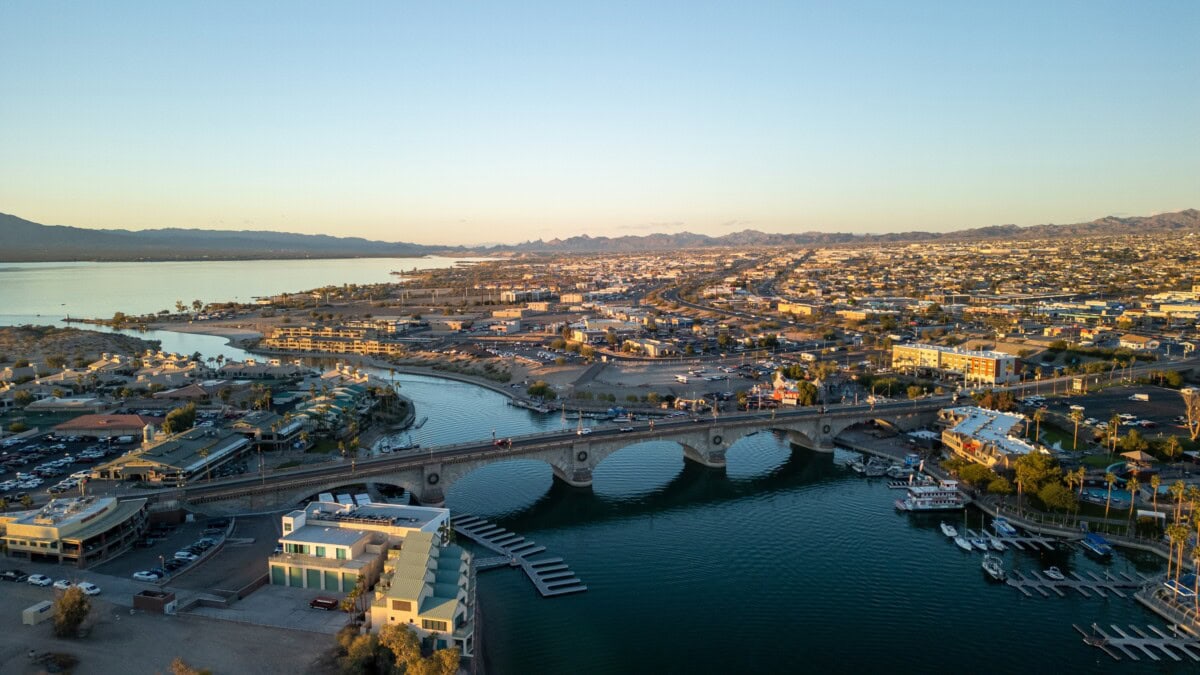
2. Lake Havasu City, Arizona
- Average annual precipitation: 4.2 inches
On the northeastern edge of the Sonoran Desert, Lake Havasu City is the second-driest city in the country. Summer monsoons deliver a majority of the region’s annual rainfall, although some winter rain can occur. Apart from a few days of rain, summers are scorching. Lake Havasu City actually holds the Arizona high-temperature record of 128°F.
Rivers are the lifeblood of nearly every city on this list, and Lake Havasu City is no exception. The Colorado River sustains the population and fills nearby Lake Havasu – the giant, manmade reservoir created by the Parker Dam.
Unsurprisingly, due to extremely hot weather and near-zero rainfall, water insecurity is an issue. Lake Havasu City can rely on a large supply of groundwater, as well as water from the reservoir, though. Residents generally love the desert climate, and enjoy touring the original London Bridge, boating in the lake, or hiking
Lake Havasu City homes for sale | Lake Havasu City houses for rent | Lake Havasu City apartments for rent

3. Las Vegas, Nevada
- Average annual precipitation: 4.2 inches
Known for its glitz, glamor, and arid landscapes, Las Vegas is a true desert gem. The region is extremely dry, generally only seeing rain from summer monsoons. Monsoons have become much less predictable in recent years, too, with the 2024 season dropping just 0.08 inches of rain. However, freak storms, like Hurricane Hillary in 2023, can produce very heavy rain. These are also expected to become more common.
Las Vegas is located in the Mojave Desert – the driest desert in the country – so it makes sense that the city is basically rain-free. In fact, nearly all of Nevada is covered in desert (either the Mojave or Great Basin), helping it to be the driest state in the country.
Interestingly, even though Las Vegas gets about 90% of its water from the shrinking Colorado River, the city is not water insecure. Las Vegas has a fairly robust water supply, thanks to one of the best water reclamation and storage systems in the nation. In fact, the city treats and gives back 99% of the water it uses to Lake Mead, creating a cyclical water cycle. That, paired with aggressive lawn, watering, and unnecessary water use fines and incentives, has helped Sin City sustain its growth.
Las Vegas homes for sale | Las Vegas houses for rent | Las Vegas apartments for rent
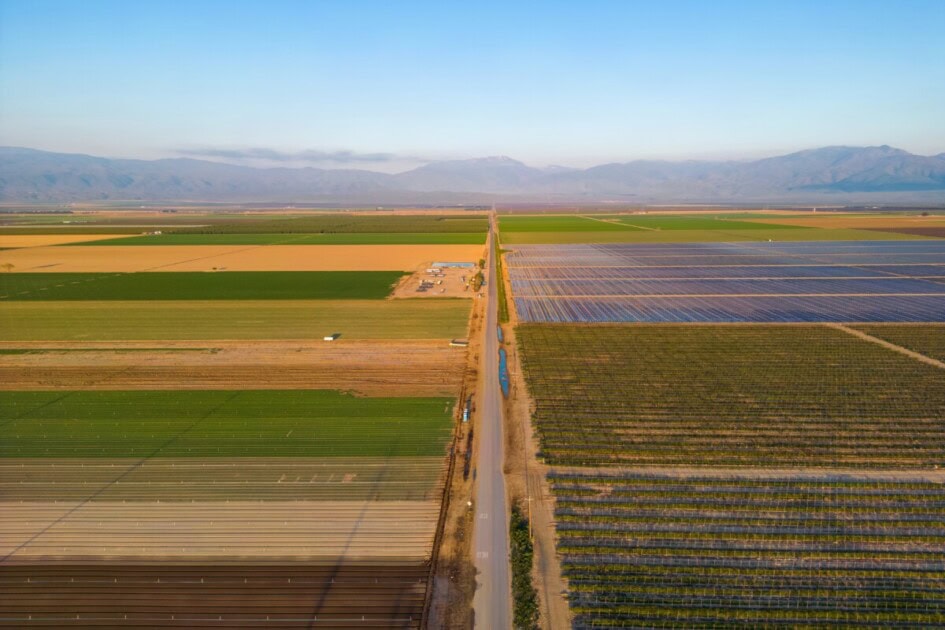
4. Bakersfield, California
- Average annual precipitation: 6.4 inches
Tucked into the southern end of California’s Central Valley, Bakersfield is the fourth-driest city in the country. It averages just 6.4 inches of rain per year, most of which falls during the winter. Some storms can drop inches of rain at a time. The rest of the year is dry, dusty, and hot.
Bakersfield sits just west of the Sierra Mojave Desert and has a desert-like climate, meaning lots of sunshine and very little moisture. Its location, surrounded by the Sierra Nevada mountains, also often traps heat and pollution, contributing to some of the worst air quality in the country. Summers regularly hit triple digits, and rainfall is too infrequent to meaningfully cool things down.
Bakersfield is surrounded by some of the most productive farmland in the world. Kern County, where the city is located, is consistently among the top agricultural producers in the nation. This is thanks to exceptionally fertile soil, endless sunshine, and lots of irrigation.
Bakersfield homes for sale | Bakersfield houses for rent | Bakersfield apartments for rent
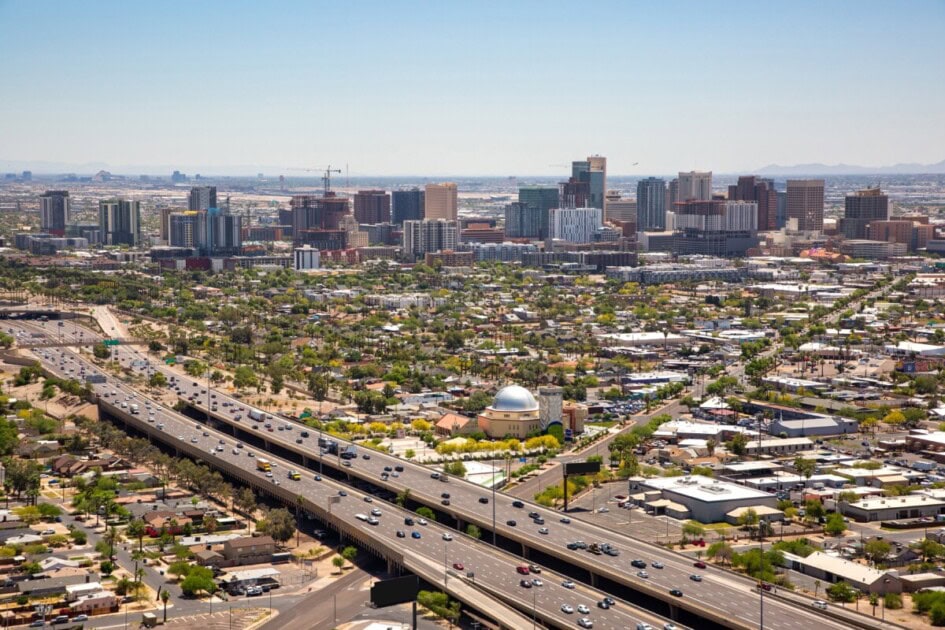
5. Phoenix, Arizona
- Average annual precipitation: 7.2 inches
Phoenix is known for many things: great food, endless golf, and spring baseball, among others. But its true calling card is heat. Months and months of dry heat. 2024 was historically hot, and 2025 has begun with some of the earliest 100°F days in the city’s history. This heat, paired with increasingly little rain, has forced the city to adapt.
Dryness is a growing issue in the Sonoran Desert, including around Phoenix. While typically stormy in the summer and mildly wet in the winter, trends have been shifting to the point where very little rain is common. Phoenix received just 1.62 inches of rain for a 365-day stretch in 2025, which comes after decades of megadrought. And, to begin the year, the Valley region endured 159 straight days without any measurable rain.
Interestingly, Tucson, just two hours south, sees more than 3 additional inches of rain per year (10.6 inches). This is thanks primarily to its higher elevation.
Phoenix homes for sale | Phoenix houses for rent | Phoenix apartments for rent
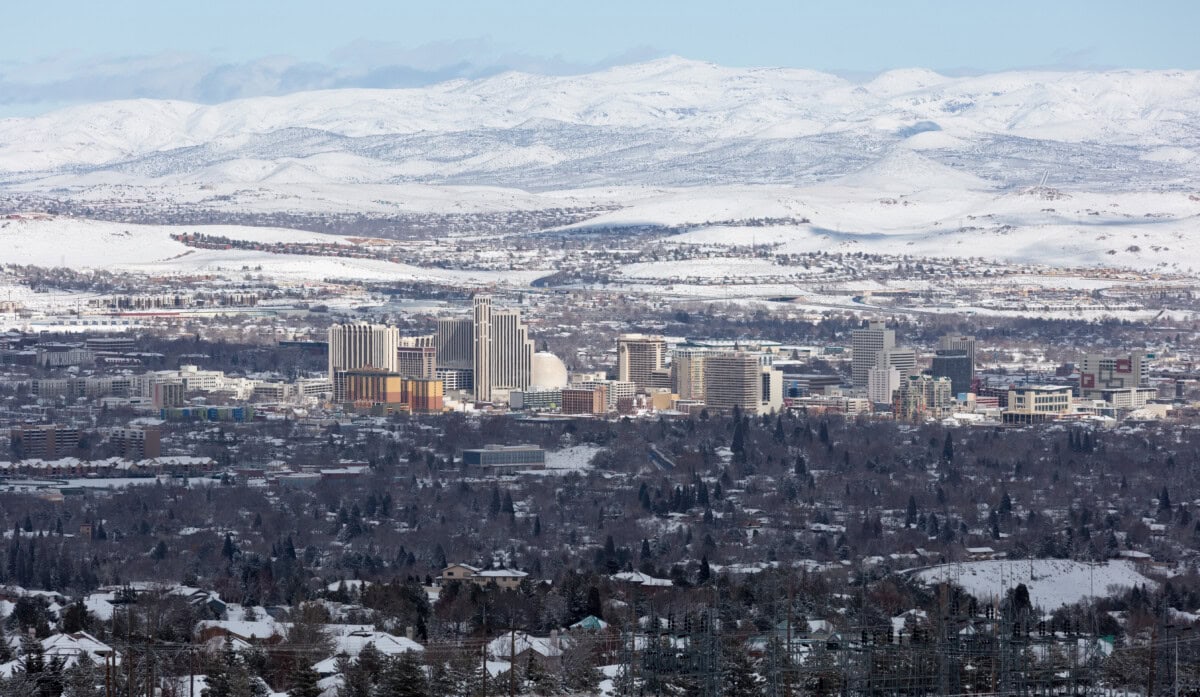
6. Reno, Nevada
- Average annual precipitation: 7.4 inches
Reno might be known as the “Biggest Little City in the World,” but it’s also one of the driest. Tucked into the rain shadow of the Sierra Nevada, Reno sees just 7.4 inches of precipitation per year, with most of it falling in the winter and spring. Summers are usually long, hot, and dry, while winters are generally cold and snowy.
Reno’s dryness comes from its location east of the Sierras and adjacent to the Great Basin Desert. Most weather systems that pass through from the west dump their precipitation on the mountain slopes, leaving Reno with whatever is left. Drought is common, but the city has adequate long-term infrastructure.
Most residents adore the dry and seasonal climate, though. Outdoor recreation is abundant in the foothills and around nearby Lake Tahoe, especially for winter skiing or spring frolicking. However, frequently hot and dry conditions create dangerous wildfire risks, and often lead to poor air quality.
Reno homes for sale | Reno houses for rent | Reno apartments for rent
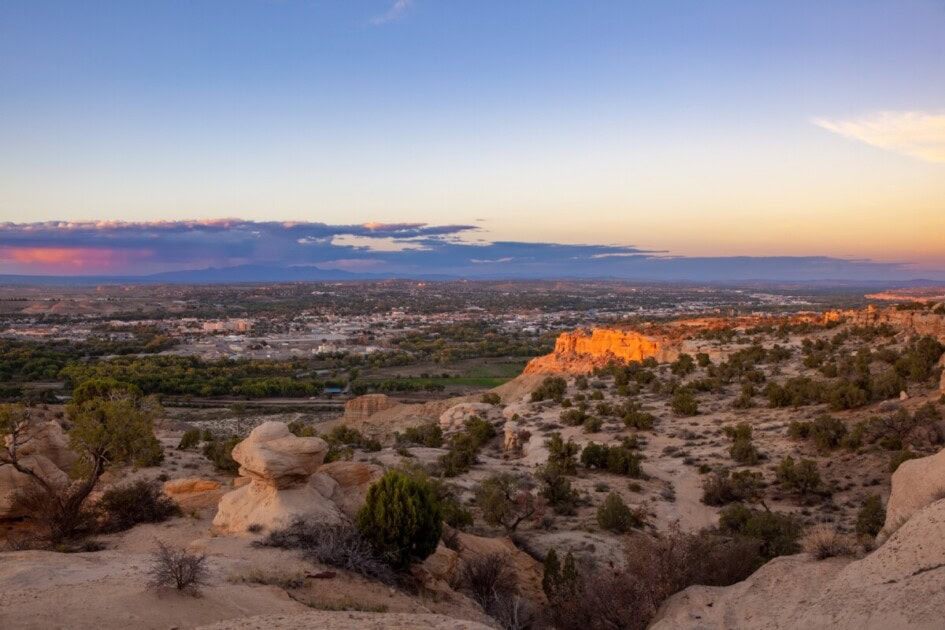
7. Farmington, New Mexico
- Average annual precipitation: 7.8 inches
Farmington is the seventh-driest city in the country and the only one in New Mexico on this list. Sitting at over 5,300 feet in elevation, Farmington is an agricultural city rich with Native culture, annual events, and outdoor amenities.
Farmington sits in the dry San Juan Basin near the Four Corners region, surrounded by mesas, canyons, and wide-open skies. Rainfall is sporadic throughout the year, although most often falls during increasingly unreliable summer monsoons. Like much of the Southwest, Farmington is feeling the pressure of hotter temperatures, a declining snowpack, and long-term drought.
If you make the move to Farmington, prepare for cold winters and hot summers, but with lots of sunshine and wide open landscapes.
Farmington homes for sale | Farmington houses for rent | Farmington apartments for rent
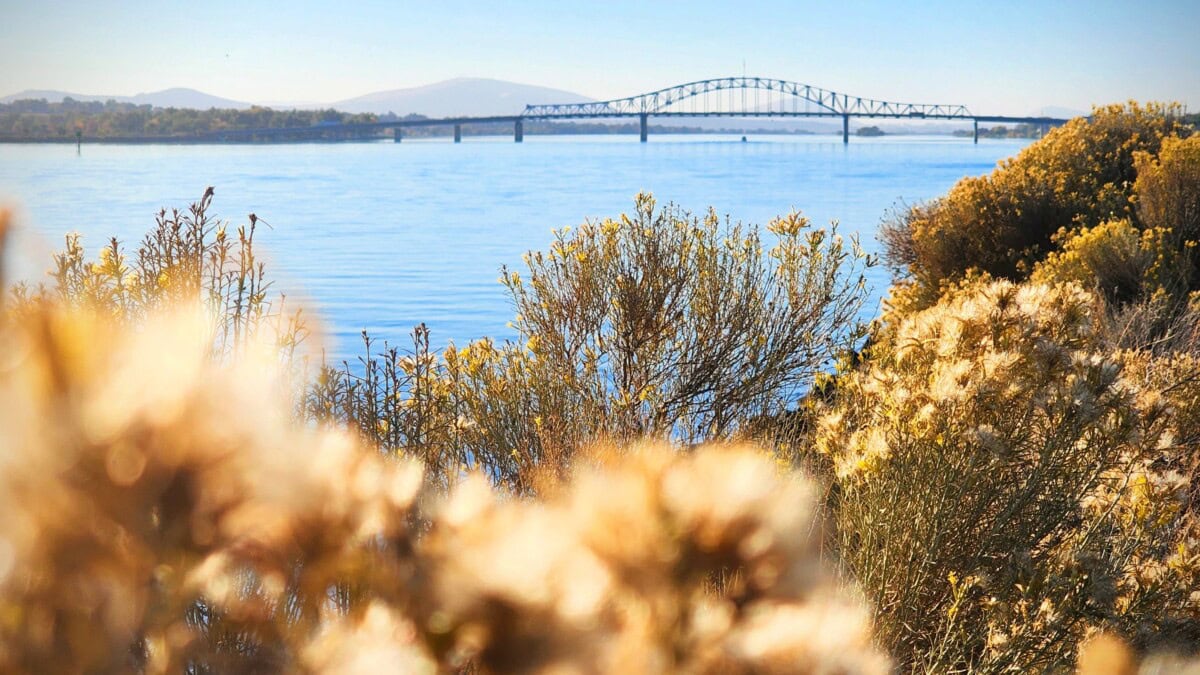
8. Kennewick, Washington
- Average annual precipitation: 7.9 inches
Located in the heart of the Columbia Basin, Kennewick enjoys over 300 days of sunshine a year, with hot, dry summers and mild winters. Irrigation from the Columbia, Snake, and Yakima rivers has transformed the entire Tri-City area into a major agricultural hub. Residents love exploring the plethora of farmers markets and ample riverside beauty.
Many people think of Washington as rainy, but over half the state is actually quite dry. This is because of the Cascade Mountains, which split the state in two: The west is wetter, and the east is dryer. This rain shadow is strong. For example, Forks, WA, on the Pacific Coast, gets around 120 inches per year – nearly 20 times Kennewick’s total. Most Pacific storms are nearly depleted by the time they reach far-Eastern Washington.
The difference in rainfall also helps Eastern Washington also look like a different world from Western Washington. Dry, desert-like plains, rolling volcanic hills, and river-carved gorges make up the landscape, compared to evergreen forests and lush floodplains in the west. Some precipitation
Kennewick homes for sale | Kennewick houses for rent | Kennewick apartments for rent
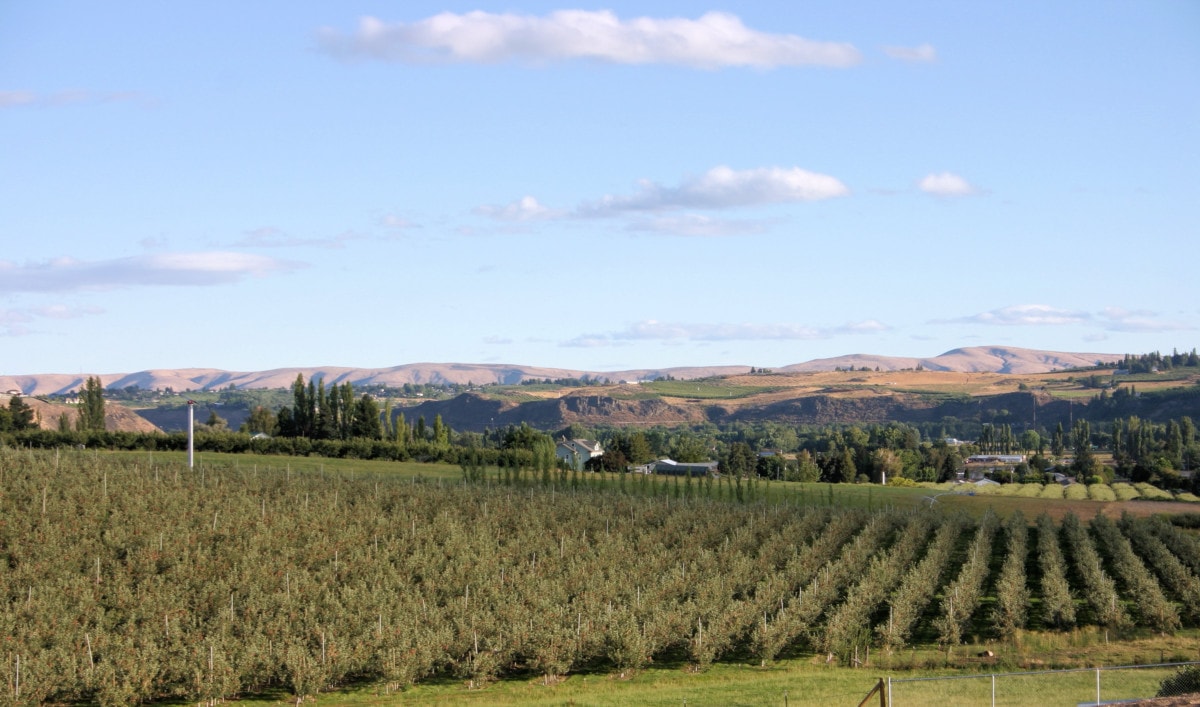
9. Yakima, Washington
- Average annual precipitation: 8 inches
Yakima sits in the Yakima Valley just east of the Cascades, seeing very little rain and plenty of sunshine. Winters are cold and somewhat snowy, but spring, summer, and fall are generally pleasant. Some hot days are common, although they’re nothing like desert cities.
The Yakima Valley is in the Columbia River Basin, which is a fertile, diverse landscape carved from the Columbia River. Thanks to the basin’s rich volcanic soil, long growing seasons, and irrigation from the Yakima and Naches Rivers, Yakima is a major agricultural powerhouse best known for apples, hops, and wine grapes. Yakima wine is actually somewhat of a delicacy.
Apart from agriculture, there’s a lot to do in Yakima, from touring local wineries, to hiking in the nearby Cascades and enjoying sunny days at local parks and trails.
Yakima homes for sale | Yakima houses for rent | Yakima apartments for rent
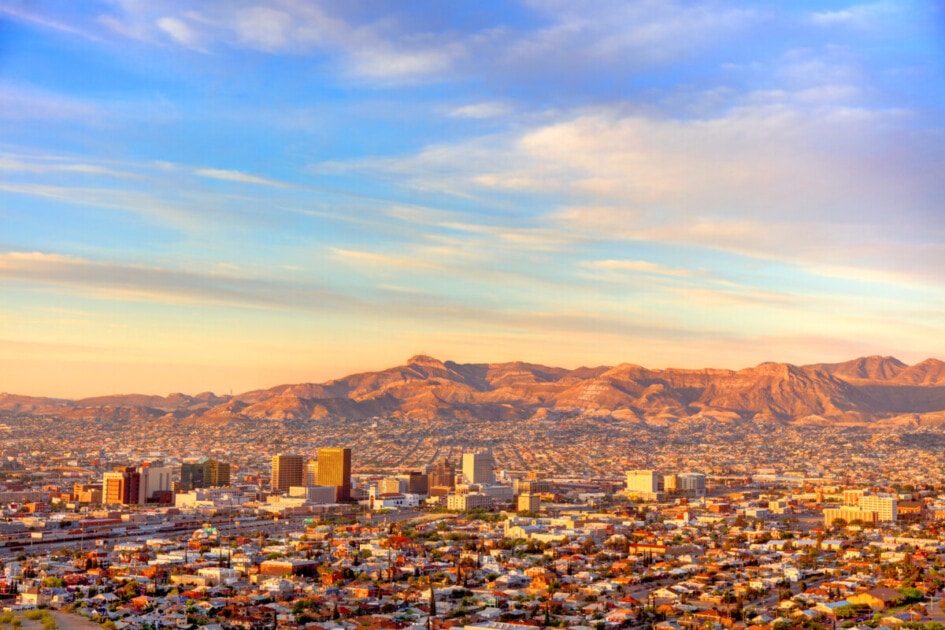
10. El Paso, Texas
- Average annual precipitation: 8.8 inches
El Paso, situated in the Chihuahuan Desert, is the tenth-driest city in the United States. A true-Western city, El Paso is known for its scenic views of the Franklin Mountains, incredible food, and centuries of Native and colonial history.
El Paso is usually very hot and dry – summers are typically in the 100°F range, but it’s actually in the midst of an extreme, ongoing drought. Conditions have been exacerbated by a notably dry winter and below-average snowpack in the Rio Grande headwaters. These conditions have led to reduced river flows and declining air quality from dust storms.
Because of its arid climate, the city is investing in dramatic water management strategies, like increased wastewater recycling and aquifer storage. The Pure Water Center is at the heart of it all, delivering up to 10 million gallons per day of clean, toilet-to-tap water. Even so, climate change is pushing the city to its limits.
El Paso homes for sale | El Paso houses for rent | El Paso apartments for rent
How is dryness changing?
Due to climate change, precipitation patterns are increasingly flip-flopping between deluge and drought. That, paired with hotter, drier weather in the Southwest, means the driest places in the U.S. will likely get drier.
Rainfall in the Southwest is expected to become heavier when it does occur, but also less frequent, making water conservation more important in fast-growing desert cities. Drought in the region was recently at its worst level in more than 1,200 years.
In general, experts predict that most of the U.S. will see longer dry seasons and shorter but more intense wet seasons.
Methodology
This list contains annual precipitation data for metropolitan areas (“cities”) with over 100,000 residents.
Data was obtained from the National Oceanic and Atmospheric Administration (NOAA) and its subsidiary, the National Centers for Environmental Information (NCEI). Total rainfall data is a 30-year average from 1991-2020. Average rainy days data is through 2023. Additional data found on the U.S. Climate Normals database.
The post The 10 Driest Cities in the U.S., Ranked appeared first on Redfin | Real Estate Tips for Home Buying, Selling & More.



